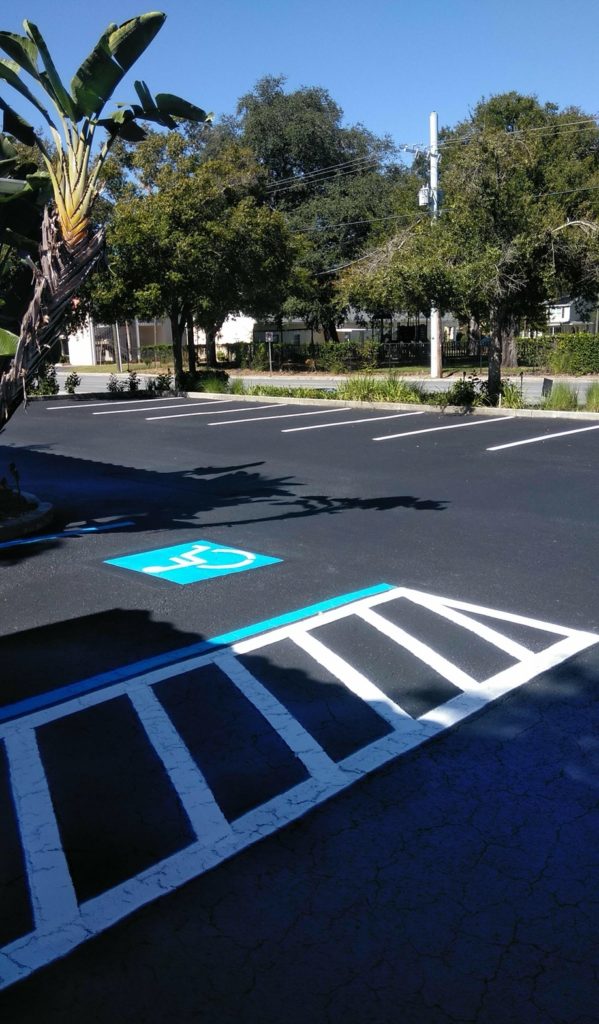Raise Sidewalk Performance: Cold Mix Asphalt Sealing Tactics
Wiki Article
Cold Mix Asphalt Vs. Hot Mix Asphalt: Which Is Right for You?

Make-up Differences
Cold mix asphalt is generated by emulsifying the asphalt binder with water and an emulsifying representative prior to blending it with accumulation. The warm mix asphalt production procedure includes heating up the aggregate and asphalt binder independently before incorporating them at the asphalt plant.
Moreover, cool mix asphalt tends to be much less dense and extra versatile than hot mix asphalt. This versatility makes it much better fit for areas with higher levels of activity, such as driveways or roadways with hefty web traffic. In contrast, hot mix asphalt is known for its high longevity and resistance to rutting and fracturing, making it a recommended choice for freeways and high-traffic roads where durability is critical.
Setup Process Variations
The process of installing cold mix and warm mix asphalt displays noteworthy variations in their requirements and treatments. Cold mix asphalt, being a much more versatile material, can be used straight from the bag or container onto the hole or harmed area. It requires marginal preparation job, such as cleaning up the area and condensing the cold blend with hand devices. This makes it a practical alternative for fast and momentary solutions. In contrast, hot mix asphalt demands a more elaborate installation procedure. It includes heating the blend to high temperatures prior to laying it down on an appropriately ready base. The prep work includes compacting the base, applying a tack coat, and utilizing heavy equipment like pavers and compactors for a smooth and durable surface. Because of the home heating requirements, warm mix asphalt installments are generally performed by professionals with specific devices, ensuring a much more structurally audio and permanent outcome.Resilience and Durability Aspects
When taking into consideration asphalt alternatives, durability and durability are critical aspects to examine for lasting pavement performance. Warm mix asphalt (HMA) is recognized for its phenomenal resilience and durability.
In regards to durability, HMA typically outperforms CMA due to its exceptional toughness and resistance residential or commercial properties. HMA pavements have a longer life span, requiring less frequent repair work and upkeep, which can convert to cost financial savings in the future. Additionally, HMA pavements are more easily adjustable to satisfy specific task demands, additionally improving their sturdiness.
Cost Considerations
Taking into consideration the financial ramifications is an essential facet when evaluating the selection in between warm mix asphalt (HMA) and cool mix that site asphalt (CMA) for pavement tasks. While the preliminary expense of warm mix asphalt is typically greater than that of chilly mix asphalt, HMA typically offers a more cost-efficient solution over time due to its exceptional toughness and durability. HMA is known for its ability to withstand hefty web traffic lots and extreme climate problems, reducing the demand for regular repair work and maintenance. On the various other hand, cold mix asphalt is much more inexpensive upfront but may need even more constant patching and resurfacing, leading to greater maintenance prices in time.In enhancement to product costs, it's vital to take into consideration the expenditures connected with installation and upkeep when comparing HMA and CMA. HMA usually requires customized devices and proficient labor for appropriate installation, which can influence general project prices. On the other hand, CMA is simpler to work with and can often be used making use of simpler methods, possibly decreasing installment expenses. Inevitably, the choice between HMA and CMA must take into account not just the first cost however also the long-term economic ramifications to identify one of the most affordable alternative for the certain pavement job.
Environmental Effect Contrast
Contrast of the environmental effects in between warm mix asphalt (HMA) and cold mix asphalt (CMA) exposes distinctive distinctions in sustainability practices. HMA production needs heats, leading to boosted power intake and greenhouse gas emissions. The process likewise launches unpredictable natural substances (VOCs) and hazardous air contaminants (HAPs) into the environment. In comparison, CMA is generated and used at reduced temperature levels, decreasing power usage and discharges dramatically. The lower production temperatures of CMA lead to reduced fuel usage and reduced degrees of CO2 emissions, making it a much more eco-friendly choice.Furthermore, using CMA typically includes recycling existing asphalt pavement, advertising source preservation and minimizing the amount of waste sent to landfills. This reusing facet further enhances the sustainability of CMA you could look here contrasted to HMA. On the whole, when taking into consideration the ecological effect, CMA emerges as a more eco lasting option due to its reduced power requirements, reduced exhausts, and the capacity for recycling existing products. By selecting CMA over HMA, road construction tasks can add positively to ecological conservation initiatives.
Verdict
In verdict, the choice in between cool mix asphalt (CMA) and hot mix asphalt (HMA) relies on various aspects such as make-up, installation procedure, resilience, durability, price, and environmental effect. asphalt repair. While CMA offers a affordable and quick remedy for small repair work, HMA makes sure premium resilience and his comment is here durability for hefty website traffic areas. Consider these elements very carefully to establish which kind of asphalt is the best option for your paving requires

Considering the economic implications is a vital aspect when examining the choice in between warm mix asphalt (HMA) and cold mix asphalt (CMA) for pavement tasks. While the initial expense of warm mix asphalt is typically higher than that of chilly mix asphalt, HMA often offers an extra cost-effective solution in the lengthy run due to its remarkable toughness and durability. angle parking.Comparison of the environmental effects in between warm mix asphalt (HMA) and cool mix asphalt (CMA) discloses distinct differences in sustainability methods.In verdict, the selection between cold mix asphalt (CMA) and hot mix asphalt (HMA) depends on different aspects such as make-up, installment procedure, durability, longevity, expense, and environmental effect
Report this wiki page